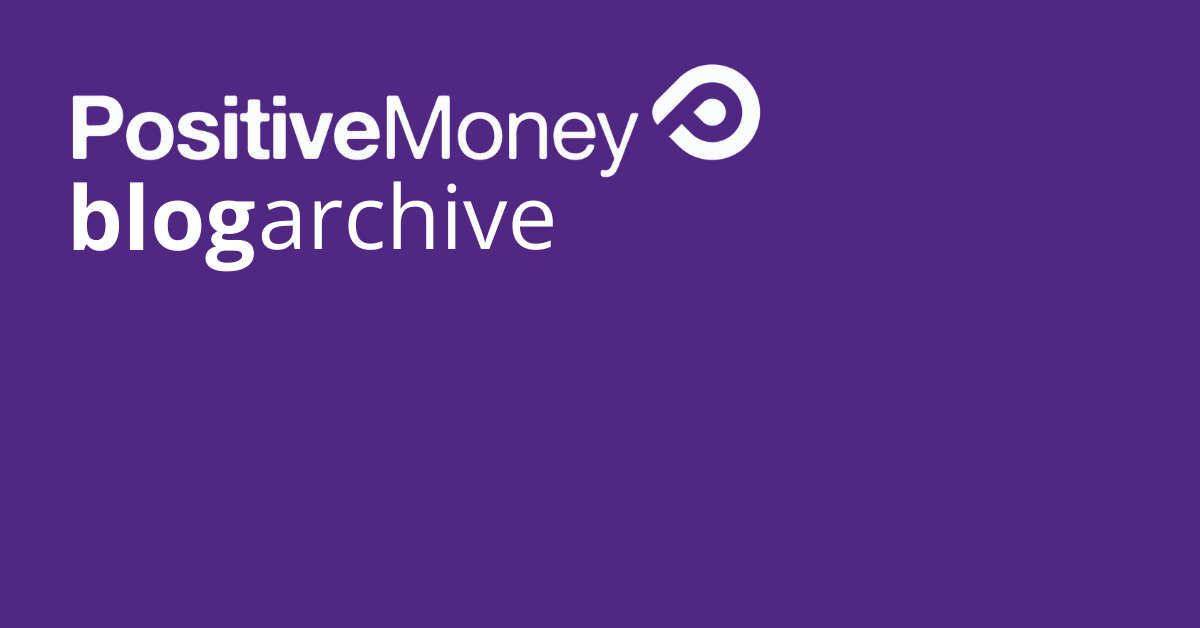Why Positive Money only has 3153 Facebook likes

Why when the news is full of stories of debt and austerity is it still so tricky to get Positive Money’s message across?
I have spent six years of my life as a teacher which has given me plenty opportunity to practice explaining unfamiliar concepts to people. However, explaining and getting people interested in monetary reform is still something I find remarkably challenging. I don’t think I’m alone in this and as such I think it’s important to explore the barriers and best ways to spread the money reform message.
We are persuaded to accept certain views on the world either because they feel right (emotion), make sense (logic) or because someone we trust told us so (authority). Perhaps the strongest of these, yet least reliable in truth terms, is the call to emotion. This is also perhaps the biggest obstacle to explaining the truth behind our monetary system, because if something doesn’t feel right it doesn’t matter how much sense it makes people generally won’t accept it. The fact that private banks create money is not a familiar idea. It is also not compatible with the common notion that the Bank of England creates all our money or the sense that the money we put in our banks is our property sitting in there just like in a piggy bank waiting for us to come along and take it out.
So how can we break down the complexities of explaining money creation?
Let’s start with the claim: “the vast majority money is created by private banks out of thin air through their issuing of credit”. We need to make sure that the subject of any claim can be disputed (people understand the claim), will be disputed (we’ve made it relevant by linking it to something people care about) and that this claim is narrow enough that it can be argued in the time available.
Then because of the barriers mentioned above to accepting this claim we need to provide convincing evidence to support it. This is done with expert opinion (authority), facts, statistics, examples (logic) and appeals to people’s beliefs or needs (emotion).
All the time we have to make sure the assumptions that tie the evidence to the claim hold up. Here are some examples that have worked for me.
Authority: good for introducing the concept, especially if you can reference it.
“Here’s a quote from the chief economics commentator of the Financial Times, Martin Wolf: “The essence of the contemporary monetary system is the creation of money, out of nothing, by private banks’ often foolish lending.” (FT, 9th Nov 2010). And another from the Bank of England “When banks make loans, they create additional [bank] deposits for those that have borrowed the money” (Quarterly Bulletin 2007 Q3).”
Logic: best applied, in my opinion, through the Socratic Method, by asking the questions that lead the answerer to the logical conclusion.
“If you can access all your money in your bank account at any time, how is that money also available to the bank to invest? In other words how can your money be in your account and be lent out to someone else at the same time?”
This breaks through the piggy bank notion to the truth that the numbers in your bank account are merely an IOU from the bank. As such the amount of cash the bank holds at any time only has to be enough to answer those IOUs when they are demanded in cash form. Since money can’t be in two places at the same time new money must have been created.
It can be useful to have the person imagine themselves in a particular situation, for example in a community with no money or as a bank manager. You can then work through the consequences that follow from their actions in this role.
“Imagine you have a secure safe in a central convenient location. You persuade people to store their gold safely with you. In exchange for their cash you give them an IOU for a quantity of gold. How can you profit from this? …How much gold do you actually need to keep in the safe? …What would enable your IOUs to be more widely accepted? …What’s stopping you producing more IOUs than gold in the safe? …What happens if the IOUs can be made digital? Etc. etc.
Another way to approach the issue is to ask people if they can define the commonly used word inflation. You can then proceed to ask what two factors affect it: the amount of money in circulation and the supply of goods and services. The logical conclusion of this line of questioning is that if our economy is growing (i.e. supply of goods and services are increasing) yet we have 5% inflation the amount of money in circulation must be increasing. Which leads to the question how is this money created and by whom?
Emotion: perhaps the most difficult to use because of the challenges in eliciting a feeling associated to what is for many people an unfamiliar concept. There are however no shortages of relevant emotive issues with austerity, banker’s bonuses, and environmental destruction all hitting the headlines.
An excellent example is Ben Dyson’s article “Government planning to privatise money!” It elicits a “how dare they” feeling because of negative associations you already have with privatisation (as with the planned privatisation of the NHS) and draws you in to find out more.
What has worked for you?